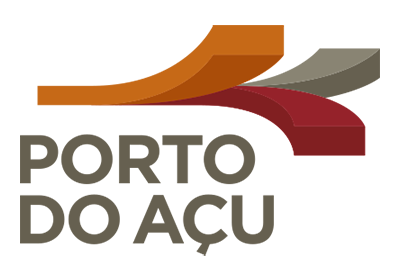Biodiversity
Home » Environment and Climate » Biodiversity
Port of Açu is located in an area of high biological diversity, where the restinga ecosystem and the Atlantic Forest biome prevail. The region is part of the lower Paraíba do Sul watershed, whose main water bodies are the Paraíba do Sul River and the Iquipari, Açu, Salgada, Veiga, and Grussaí lagoons. The port is located within the 100km priority area for the protection of sea turtles, mainly of the Caretta caretta species.
To reconcile the conservation of biodiversity with sustainable business development, we go beyond environmental monitoring programs. Our efforts are centered on two action pillars: (i) preservation of the restinga ecosystem through actions by the RPPN Caruara, a conservation unit created voluntarily in 2012, and (ii) protection of sea turtles, which are a key species in the region.
Port of Açu is located in an area of high biological diversity, where the restinga ecosystem and the Atlantic Forest biome prevail. The region is part of the lower Paraíba do Sul watershed, whose main water bodies are the Paraíba do Sul River and the Iquipari, Açu,
Salgada, Veiga, and Grussaí lagoons. The port is located within the 100km priority area for the protection of sea turtles, mainly of the Caretta caretta species.
To reconcile the conservation of biodiversity with sustainable business development, our efforts are centered on two action pillars: (i) preservation of the restinga ecosystem through actions by the RPPN Caruara, a conservation unit created voluntarily in 2012, (ii) protection of sea turtles, which are a key species in the region, and (iii) sustainable environmental management, including monitoring programs and environmental education activities.
Learn more bellow:
Caruara Private Natural Heritage Reserve (RPPN Caruara)
An impressive asset with 4,000 hectares of biodiversity hotspots, the Fazenda Caruara Private Natural Heritage Reserve (RPPN) was voluntarily created to protect an important fragment of restinga vegetation, with the mission to protect, restore and foster biodiversity. This is a socioenvironmental legacy for the region and Rio de Janeiro state. Learn more at Caruara Reserve website.
Learn more about the restinga ecosystem at our Library.
Programa de Monitoramento das Tartarugas Marinhas (PMTM)
Created in 2008, the Sea Turtle Monitoring Program (PMTM) seeks to integrate Açu’s development with the protection of sea turtles through environmental education, community engagement, monitoring, and production of scientific knowledge.
PMTM meets the technical guidelines of the Chico Mendes Biodiversity and Conservation Institute (ICMBio), Tamar, and the State Environmental Institute (INEA). The program monitors 62 km of coastline every day – from Pontal do Atafona, in São João da Barra, to Barra do Furado, in Campos (both municipalities located in Rio de Janeiro State).
During the reproductive period (October to March), nests are located, cataloged, and monitored until hatchlings are born. The program maintains a veterinary clinic with a rehabilitation center for sea turtles for treatment and recovery.
From 2008 to March, 2024:
- 18.699 protected nests
- More than 1,3 million hatchlings returned to the sea
- 62 km of beaches monitored daily
Sustainable management
- Environmental monitoring and quality indices: We perform environmental monitoring in compliance with the permitting processes and applicable legislation, in line with best practices and the ongoing improvement of the port industry. Using our robust network for monitoring continental and marine water resources, air quality, noise emissions, and wildlife, we track the environmental quality of the port and its surroundings, creating a database that dates back to the period prior to the implementation of the project. Port of Açu has a comprehensive weather and ocean data monitoring system specifically developed for maritime and port operations and considered one of the most modern and complete among Brazilian ports. With local and hyperlocal forecasts up to eight days in advance, the system makes it possible to analyze operational conditions and risks for each terminal and type of maneuver, which can be accessed via individual login at Sigma and i4.
- Water resources: Our water management strategy is focused on ensuring water security while aligning the development of activities at Porto do Açu with the sustainable use of natural resources. Through long-term planning and specialized consulting support, we implement continuous monitoring of groundwater extraction. Additionally, as part of our Water Efficiency Program, we aim to diversify our water sources and progressively increase the use of alternative sources in our operations, including water reuse and rainwater harvesting. A key water source for Porto do Açu is the Emborê Aquifer, a water body with high quality natural water that spans over 1,000 square kilometers along the northern coastline of the state of Rio de Janeiro.
- Dredging: We are responsible for managing the dredging operations at Terminal 2 and, therefore, for ensuring compliance with the applicable legal and permitting requirements in addition to the guidelines established in our Standard Protocol for Maintenance Dredging (available on Library), for sea turtle protection and preservation.
- Solid waste: Our solid waste management prioritizes prevention, reuse and recycling to minimize landfill disposal.
- Environmental Education: In order to promote individual and collective responsibility and culture for environmental conservation, we carry out environmental education activities with our employees, users of the Port, and members of the local community, in line with the region’s social and environmental agenda. These initiatives are promoted through partnerships with local players, such as municipal Boards of Education and Environmental Departments, universities, scout groups, and NGOs.

Caruara Private Natural Heritage Reserve (RPPN Caruara)
Created voluntarily in 2012, RPPN Caruara is at the heart of our biodiversity conservation actions and is the largest private conservation unit in the country dedicated to the restinga ecosystem. Located near the Industrial District of São João da Barra, the reserve covers 4,000 hectares of protected area of a remnant fragment of restinga, with stretches of forest and environments associated with the Iquipari and Grussaí lagoons.
The reserve has the only seedling nursery in Brazil dedicated to the restinga ecosystem, handling 89 species that are native to this environment.
To promote biodiversity conservation actions through RPPN Caruara, we prepared a Management Plan to establish norms for the intended uses of the conservation unit. To learn more, visit Reserva Caruara
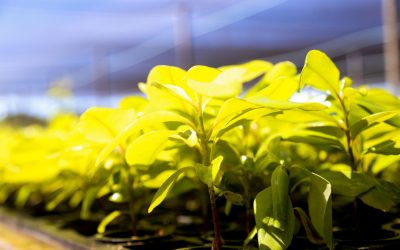

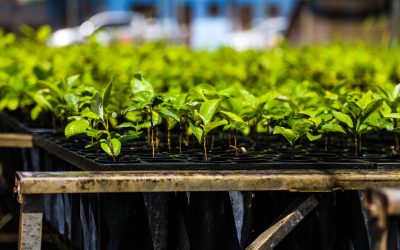

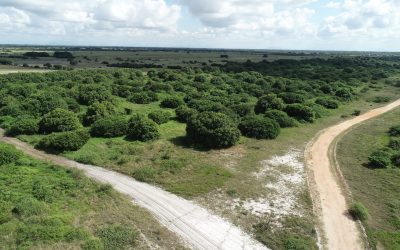
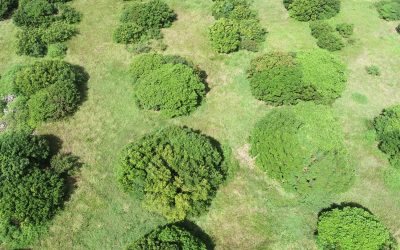
RPPN Caruara responsibilities
- Propose, implement, manage, protect, inspect, and monitor activities with a focus on preservation
- Execute and host recreational, public, and tourist programs together with the community and other agencies
- Implement policies related to the sustainable use of natural resources and support the development of local communities
- Promote regional development by facilitating road access, enabling the use of the Caruara Reserve and its surroundings by citizens of all income levels
- Engage the communities in biodiversity conservation through volunteer work and public recognition of this contribution
- Foster and execute educational and scientific research programs for biodiversity conservation in the Caruara Reserve
Considering these responsibilities, we have programs in place geared toward forest restoration and monitoring of wildlife and flora associated with environmental permitting processes. We voluntarily designed a 2030 Agenda for Caruara based on three pillars: tourist visits, environmental services, and education and scientific research.
In 2021, we began the construction of the new RPPN Caruara headquarters, which will support the implementation of the 2030 Agenda and strengthen the sustainable development chain in the region.
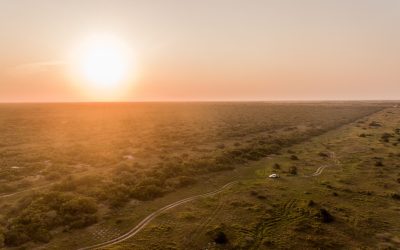
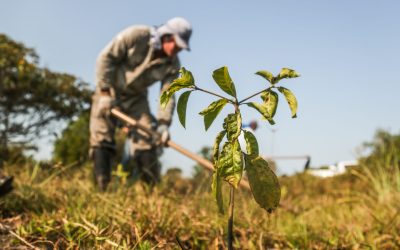
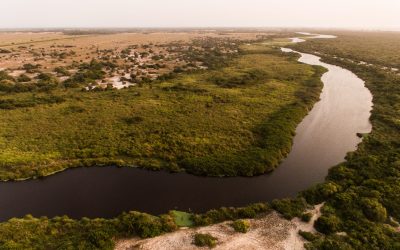
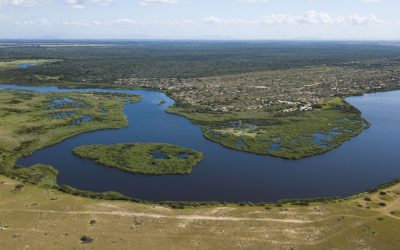
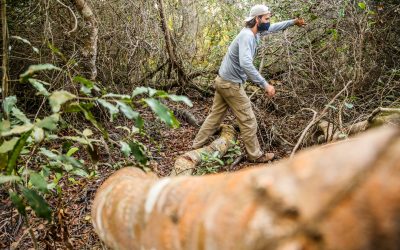
The Reserve in numbers:
protected hectares
plant species cataloged
wildlife species cataloged
research studies
species grown in the seedling nursery
Scientific research on the restinga ecosystem
Given its rich biodiversity, RPPN Caruara has participated in several research studies and development of content about the restinga ecosystem, including:
- Restinga Workshop Report;
- Book “O Tempo e a Restinga”;
- Article “Structure and floristic composition of four restinga vegetation formations in the Grussaí/Iquipari lagoon complex”;
- Presentation at a conference “Forest restoration in restingas: The experience of RPPN Caruara, São João da Barra/Rio de Janeiro, Brazil”
With a wealth of biodiversity, Caruara has participated in several research studies and content development about the restinga ecosystem, including:
Sea Turtle Monitoring Program (PMTM)
Created in 2008, the Sea Turtle Monitoring Program (PMTM) seeks to integrate Açu’s development with the protection of sea turtles through environmental education, community engagement, monitoring, and production of scientific knowledge.
PMTM meets the technical guidelines of the Chico Mendes Biodiversity and Conservation Institute (ICMBio), Tamar, and the State Environmental Institute (INEA). The program monitors 62 km of coastline every day – from Pontal do Atafona, in São João da Barra, to Barra do Furado, in Campos (both municipalities located in Rio de Janeiro State).
During the reproductive period (October to March), nests are located, cataloged, and monitored until hatchlings are born. The program maintains a veterinary clinic with a rehabilitation center for sea turtles for treatment and recovery.
In 2021, PMTM celebrated its 13th anniversary, and its contribution to scientific knowledge about turtle species in the region was expanded through a partnership signed with Tamar/ICMBio.
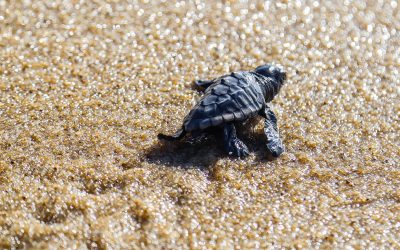
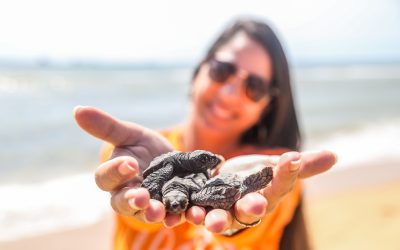
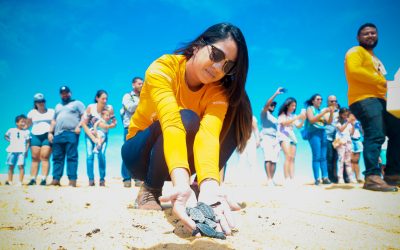
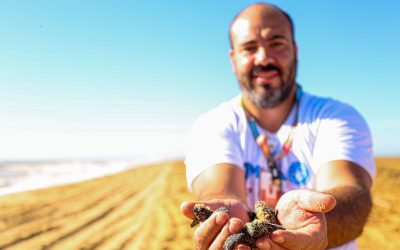
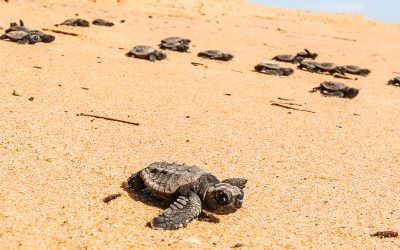

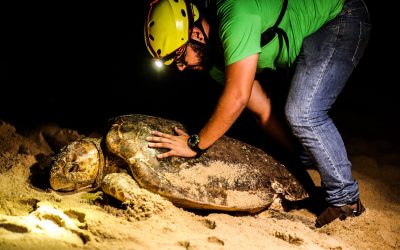
Milestones
Million
turtle hatchings released
nests protected by the 2020/2021 season
animals recovered at the rehabilitation center
animals monitored
Learn about other topics related to the Environment and Climate
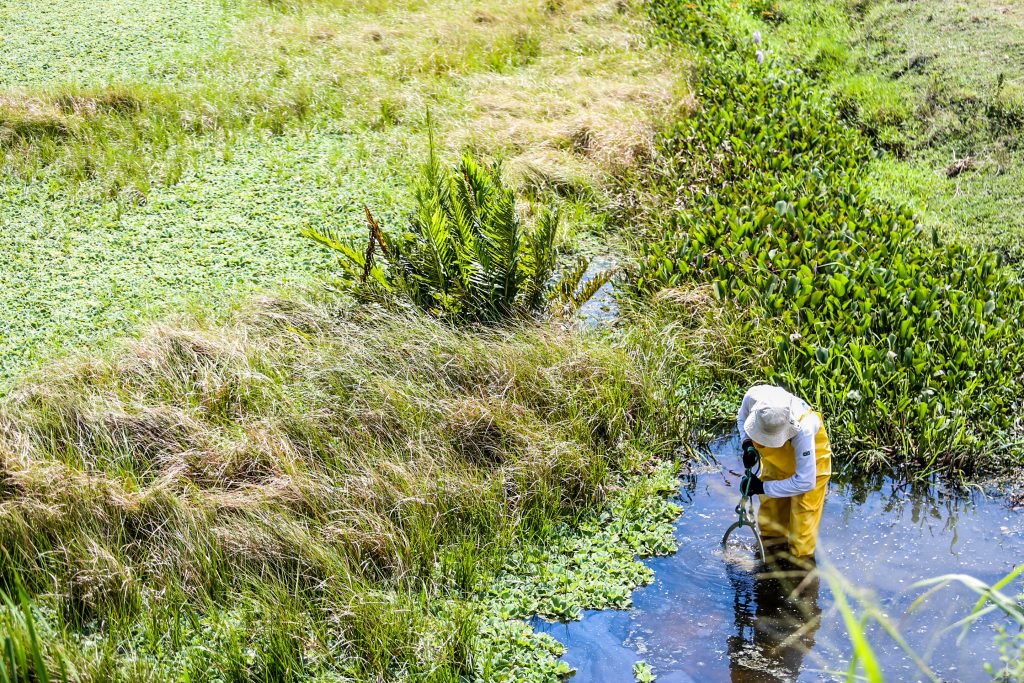
Environmental Management
Our environmental management activities are based on mapping environmental aspects and risks through assessments and technical studies and follows the guidelines of our Sustainability Policy’s standards and procedures.
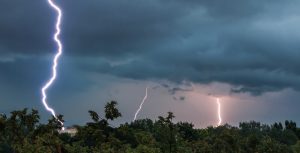
Climate Change
In developing our business, we seek to fully incorporate risks and opportunities related to climate change. Our work is based on three pillars: mitigation, adaptation, and opportunities, focusing on energy transition and low-carbon businesses.
